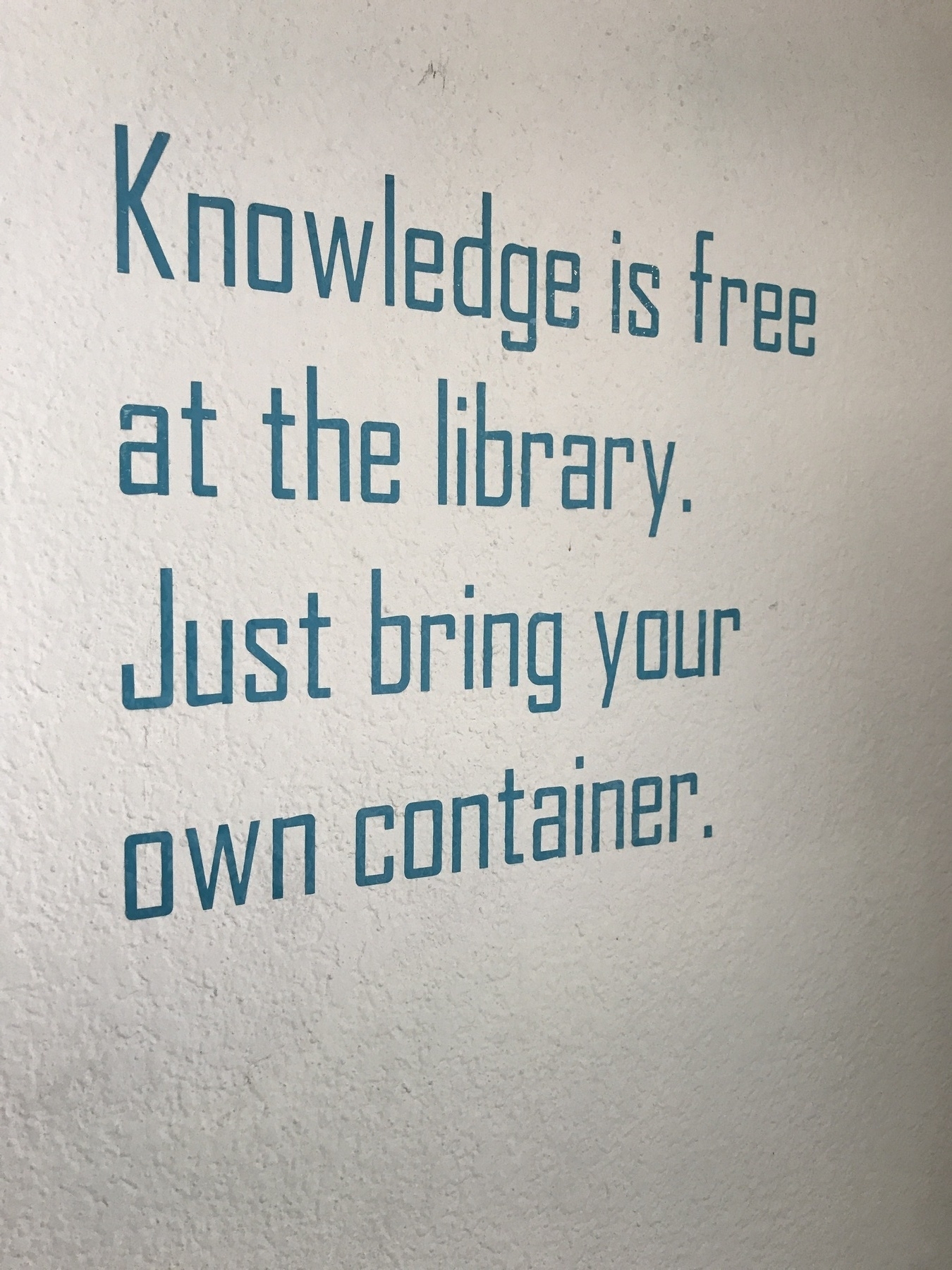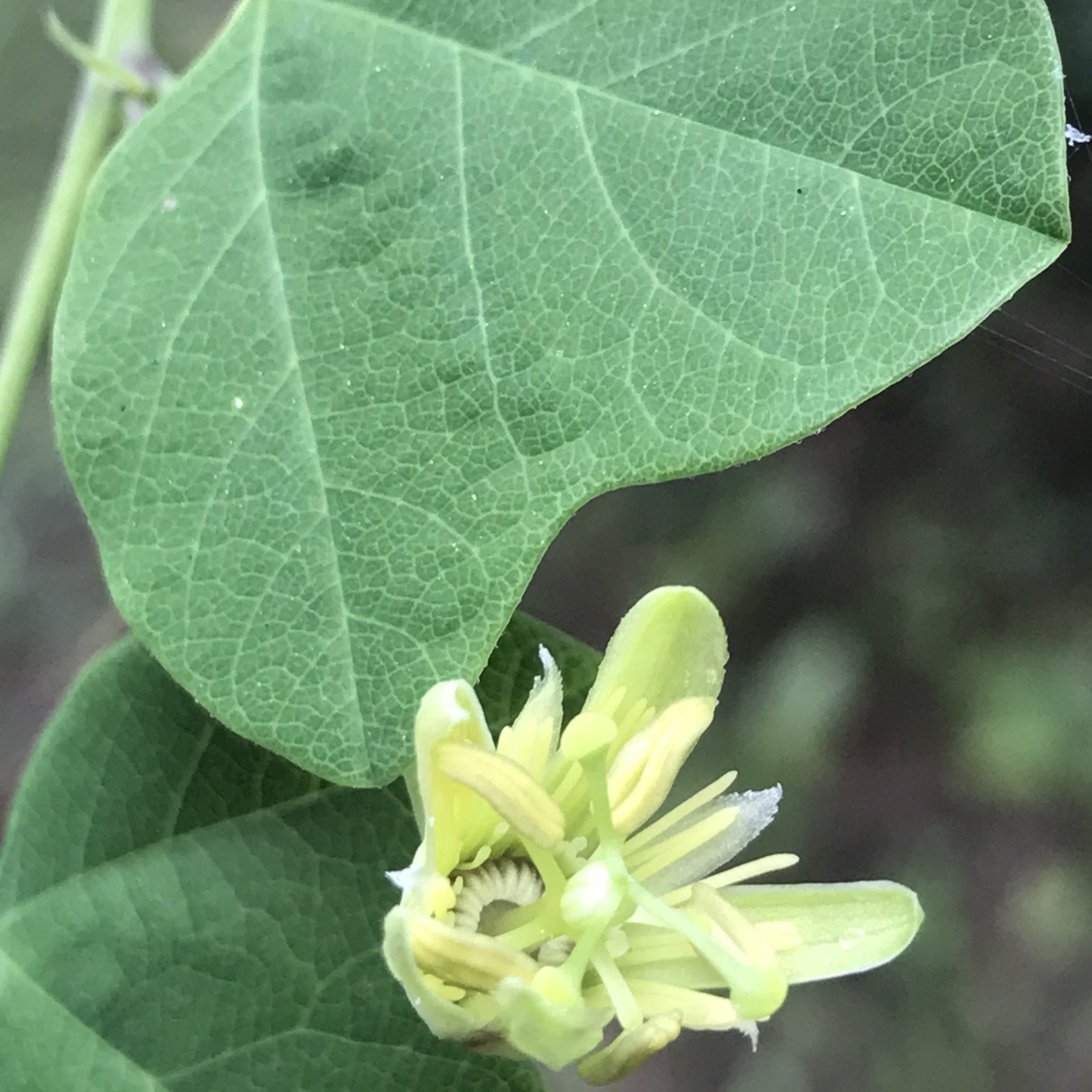What is Earth Made of
One aspect of astronomy that I have grown to love and appreciate is the tie in to the other areas of science. For example, planetary geology which, in turn, ties into our study of our own Earth’s geology. Of course this also ties into chemistry. And biology. And on on and.
This morning as I browsed Apple News1 I came across this very nice introduction to the geology of our planet. A quick read that might lead you to a much deeper exploration.
So, for example, this little bit about the Earth’s crust:
Earth's crust is made up of several elements: oxygen, 46.6 percent by weight; silicon, 27.7 percent; aluminum, 8.1 percent; iron, 5 percent; calcium, 3.6 percent; sodium, 2.8 percent, potassium, 2.6 percent, and magnesium, 2.1 percent.
I always enjoy sharing with folks that particular tidbit about the crust being almost half oxygen. I think we generally think of oxygen as an important part of the air we breath and forget that it’s not just a gas. It’s fun to remind people that it also exists as a primary element in the oxide compounds of the ground we walk on!
- The app included on every iOS device and a great way to enjoy a variety of subjects with your morning coffee! ↩︎
AppleTV Discoverability
I’m a big fan of AppleTV & Apple Music. I use them both daily. Yesterday I discovered an artist while out on a walk while listening to one of Apple’s suggested playlists: “Zone In”. I played a couple tunes by the artist on the iPhone. Today I opened Music on the AppleTV and there, in recently listened songs were a couple by that artist. I played one then wanted to play more music by the artist. But as far as I can tell, there’s no way to jump to that artist. Searching via “Find more songs by this artist” does not work. There’s no button to push.

No option to view the artist! The first song, when selected, showed the album cover art and the “… More” button. I looked there and no go. The options were Delete, Play Next, Play Later, Create Station”. Same thing for another of his albums. Hmmm.
While looking at that screen it occurred to me to try Siri on the remote. So, I pressed the Siri button and asked for more music by this artist. Nope, that function does not work in that way. Interesting because I can, from that screen in Music use the Siri button and, for example, get a list movies staring Clive Owen. TV queries also work. But ask for more music from the currently displayed artist does not. Grrrrrrrr.
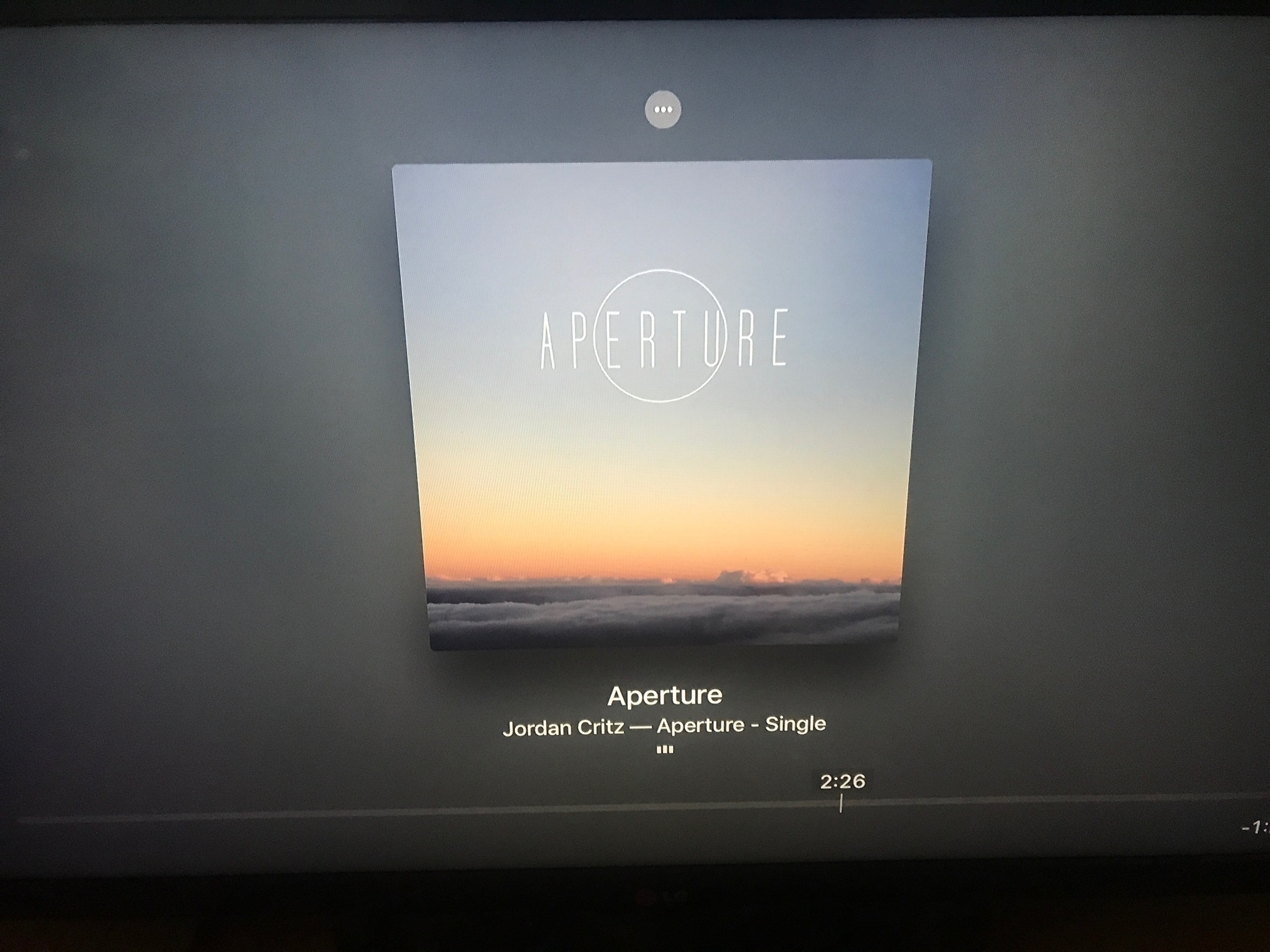
Ah, What’s this?
I eventually found it but I think this is one of those features that is not very easily discovered. Turns out I had added both of these to my library while using my iPhone. When I did eventually discover (see image above) a way to look at the artist by clicking the album art on the now playing screen then clicking the … then clicking “Go to Artist” I was able to access his other albums. I clicked one of those albums and the screen for that album was very different from the others.
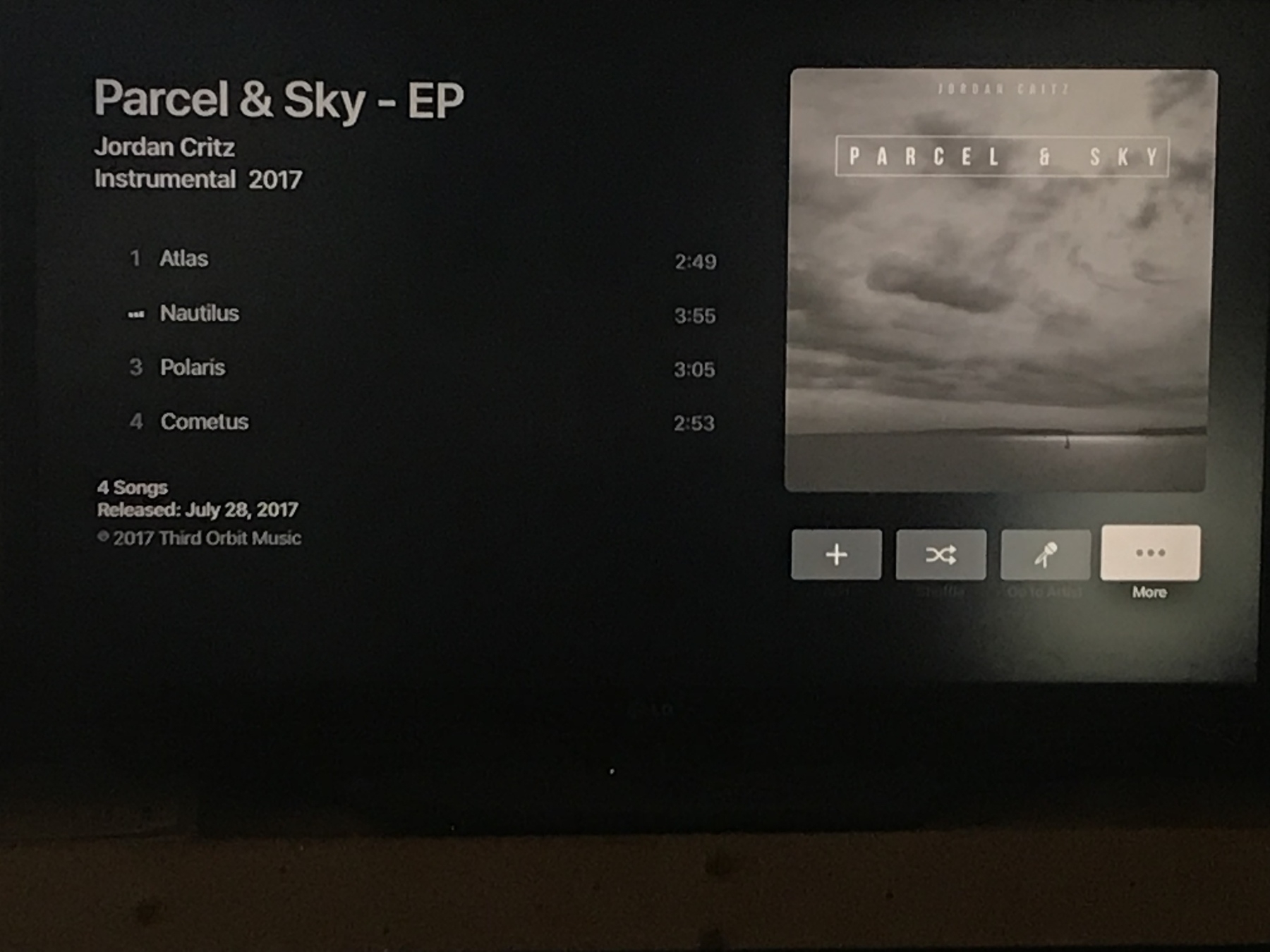
This screen included a button for “Go to Artist” below the cover art. The difference was that I had not previously added this to my library. At least, this is one difference that I noticed. Maybe there are other variables such as, did I mark the song “Loved”? I’m not certain what the rules are that will change the options presented on different screens.
I tend to think of myself as someone pretty capable of navigating these sorts of things but this took me awhile. That said, I’ve not used Music as much on the TV as I have on the iPhone/iPad. Maybe it is a question of spending more time using this particular app but that’s the point. There is a certain level of discoverability expected. The more a user has to work at this sort of thing the more frustrating it becomes and sometimes they just give up.
Seems to me that there are some improvements to be made here.
NASA e-Books
Some fantastic resources here. https://www.nasa.gov/connect/ebooks/index.html
So 🤓 much 😳 information 😬
I just watched the International Space Station fly overhead. Soundtrack: “ISS - Is Somebody Singing” by Chris Hadfield. 🤓🛰😍 Visit NASA’s spot the station to sign up for alerts.
[gallery size=full columns=1]
A quick test, & I’m really digging the drag & drop from apps to Pages! Also, Pages’ use of the Files app is very well done 🤓 iOS 11 👍🏽

Story of a sunset
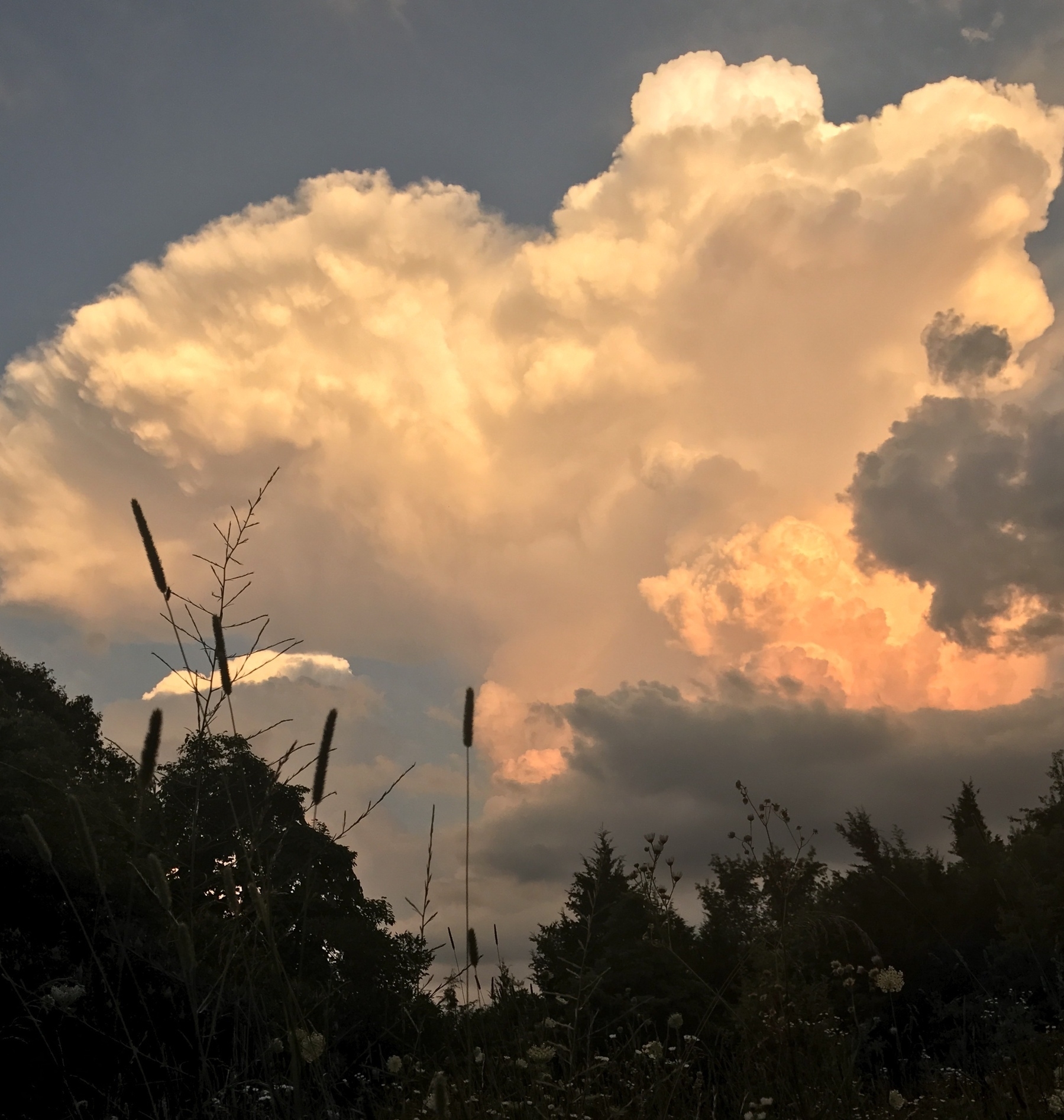
As the sun begins to set the world around me begins to dance.
As my feet crunch along the rock road below, dragonflies spin through the air just above my head. There are so many of them feeding in the fading light of the day that they form a small swarm. Higher in the air the night hawks perform their own acrobatic maneuvers above the fields, also in search of an evening meal.
Nearby, whitetail deer run across the road just as a light breeze finds this smiling human on a quiet rock road. The movement of air brings a mix of sensations to my skin and a sweet scent to my nose.
In the background of it all a sunlit cloud arrangement, complex in its movement, an ongoing description of the forces creating it.
The earth’s rotation pulls the sun further down.
A have an armadillo visiting often. Perhaps sleeping under my cabin. It is adorable and I have named it Arnold. Or maybe Gertrude. Or Pat. 😬
Importing images via drag and drop in iOS 11
After using the iOS 11 beta on my iPad Air 2 for a month I decided to go ahead and update my Pro with the release of the Gold Master released by Apple on the 12th. Wow. So nice on the big screen!
As I was browsing Apple News I came across this Verge article on the best of Cassini’s images. I wondered, could I drag an image from the article directly into the Photos app to import? I assumed not. Well, I was wrong. It seems like drag and drop is everywhere in this version of iOS. Nifty!
“An ignorant mind is precisely not a spotless, empty vessel, but one that’s filled with the clutter of irrelevant or misleading life experiences, theories, facts, intuitions, strategies, algorithms, heuristics, metaphors, and hunches that regrettably have the look and feel of useful and accurate knowledge."-Dunning Kruger
Celebrating 40 years of Voyager
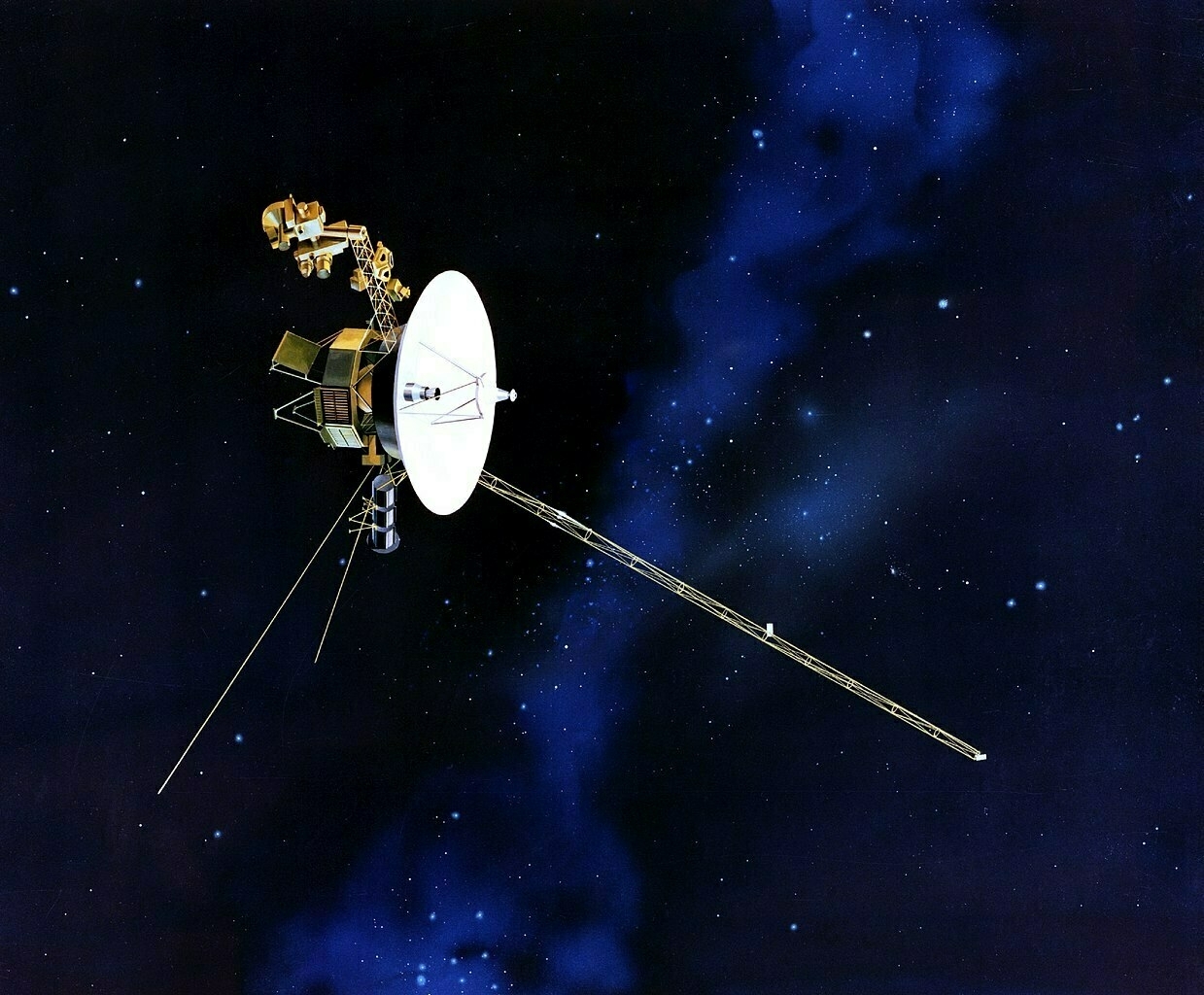
We are the only species that, due to it’s technological abilities, destroys habitat at unprecedented scale. How is it that a species which is supposedly so intelligent can cause such destruction to itself and it’s home? How is it that we can be precise in our engineering and yet so sloppy in our human interactions?
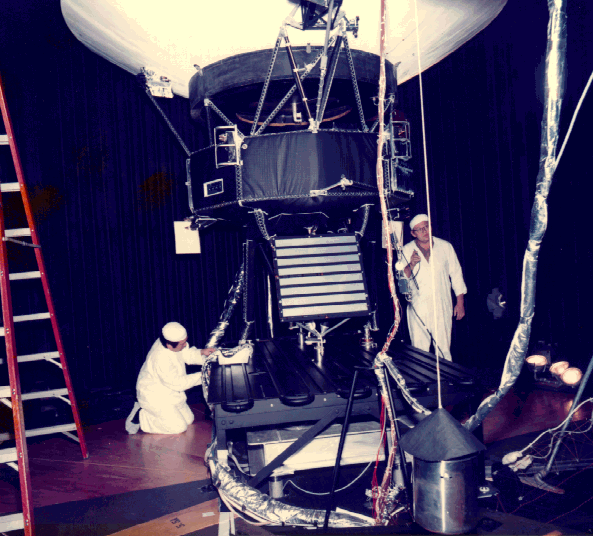
It helps to remember that we are primates. Which is to say, we’re just really smart, differently evolved Hominini, a member of the family of great apes. Perhaps from this context, it’s a bit easier to understand our persistent fallibility. As individuals and a collective, we live in fallibility though we are intelligent enough to deeply alter our environment. From fire to coal to oil to the atom; from simple tools to complex tools to earth moving machines to computers to robots exploring our solar system. We humans are constantly in a state of exploration and often destruction. Our evolutionary “success” seems to exist, though, on the finest of edges. With our ever increasing population (7.5 billion at this moment) dependent on a complex food system which is itself based on the availability of fossil fuels and a stable, semi-predictable climate.
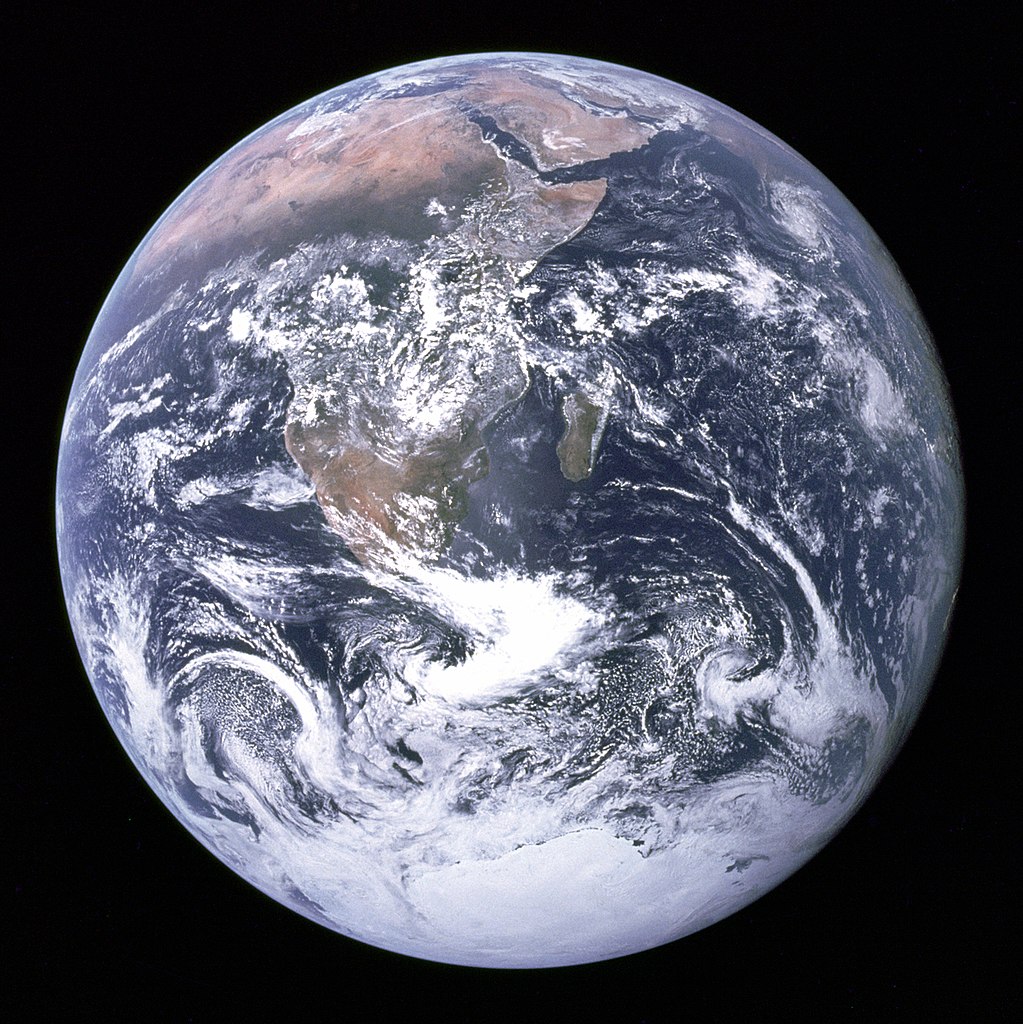
We are simultaneously capable of extended, deep reasoning as well as irrationality and superstition. In so many ways we, as individuals and as social systems, seem to reside in perpetual conflict. We often use the scientific method to wondrous and beneficial effect. Other times we use it to great disaster. Sometimes we push forward too fast, not knowing the results that may emerge. The full repercussions of our actions are often not known but even when they are predicted we fail to heed our own warnings.
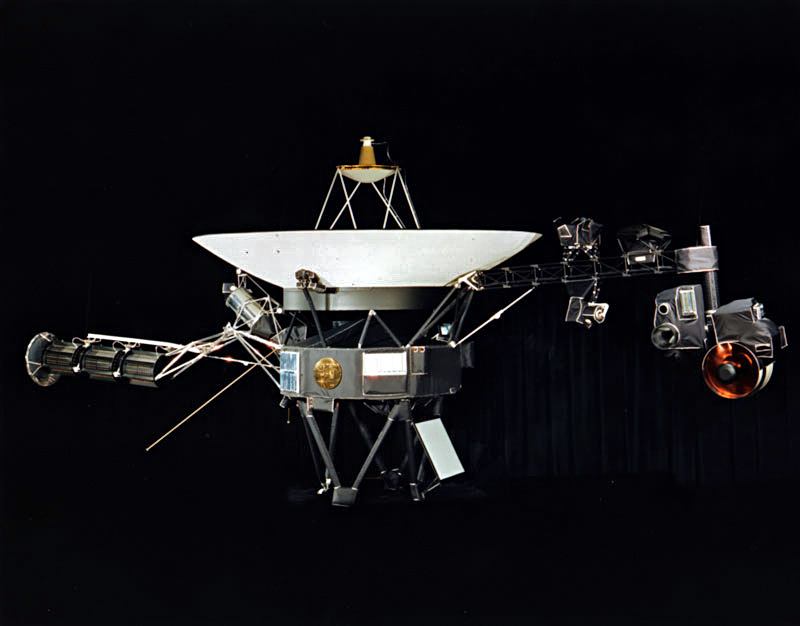
Our many societies, complex tapestries of history, culture, politics, ecology, science, art and economy, are often at odds with one another as well as with themselves. In so many ways the Voyager spacecraft are the perfect representatives of humanity. They embody our struggle with fallibility and our development of science as a method and a tool in response to that fallibility. We have developed and used these two spacecraft to explore our universe and to convey something of ourselves to it. At our very best we are explorers and communicators and sometimes our many voices are brought together in a shared expression of our common humanity.
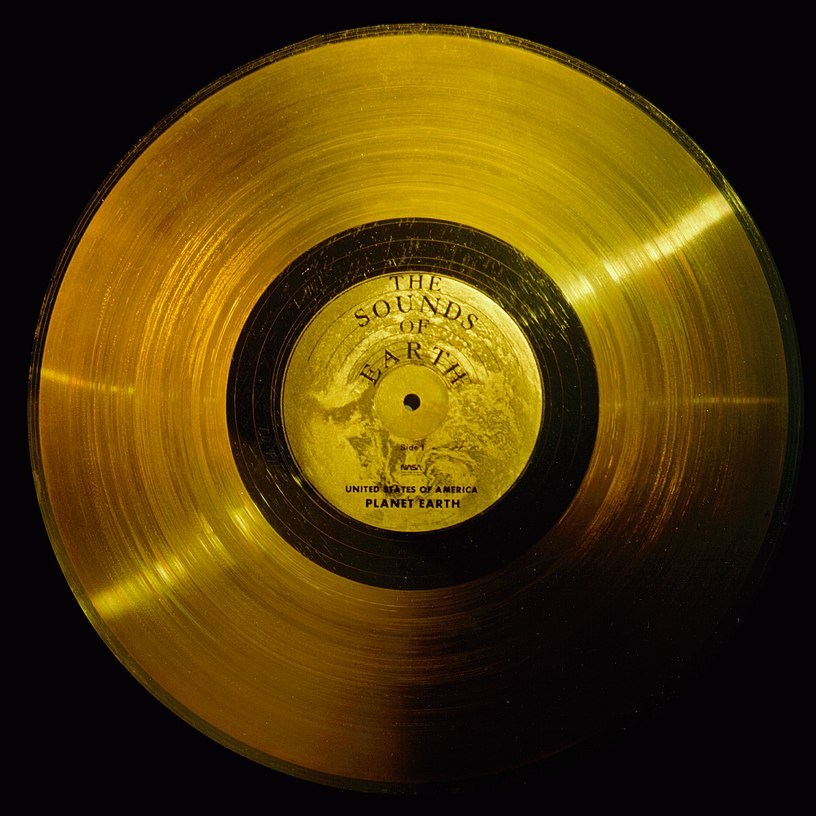
The Golden Records, our attempt to reach out into the unknown, to share something our tiny world, were created to carry our voices and our story as well as the sounds and images of our Earth. From bird song to whale song, Mozart to Blind Willie Johnson, to the sound of a human heart beating. In addition to a wide variety of audio he record included imagery ranging from illustrations of our solar system to DNA to daily life on our planet. Carl Sagan chaired the committee that spent a year selecting and then compiling the content. Included were the words of then U.S. president, Jimmy Carter:
"This is a present from a small, distant world, a token of our sounds, our science, our images, our music, our thoughts and our feelings. We are attempting to survive our time so we may live into yours."
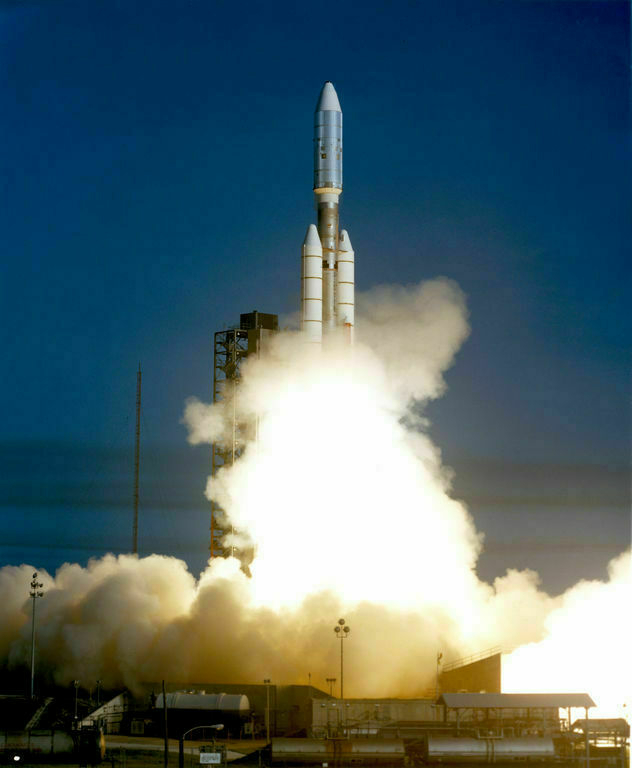
Of course, the spacecraft are far more than carriers for the Golden Records. In fact, the records were really intended to be the 2nd part of the mission, the purpose of the spacecraft after they no longer have the ability to transmit data back to us. The 1st part of their mission was, of course, the collection of data about our solar system a mission they are still performing even as they have ventured beyond the solar system.
With less computing power than a cell phone, they have, over the course of their mission, deepened our understanding our our solar system immensely. Beginning with Jupiter, and Saturn and then later Uranus and Neptune.
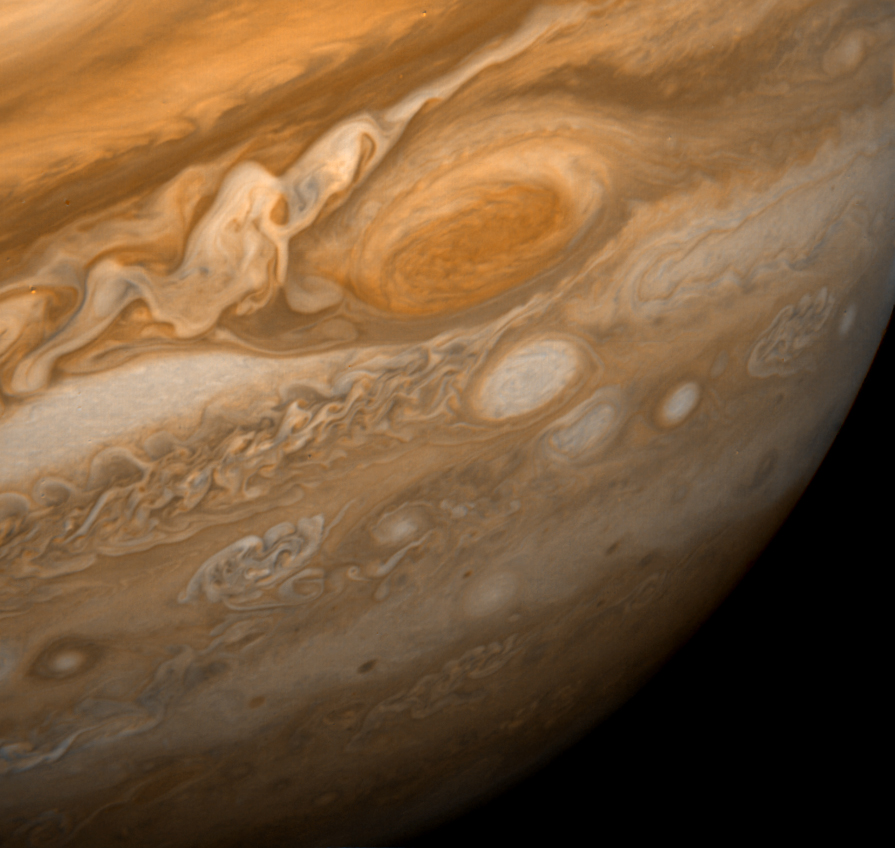
The first planetary encounter of the mission was Jupiter which began when Voyager 1 began taking photos in January 1979 with the closest approach on March 5 and final photos being taken of the planet and moons in April 1979. One of the highlights of this part of the mission was the discovery of volcanic activity on the moon of Io. It was the first time active volcanoes had been observed on another body within our solar system. Voyager’s mission at Jupiter was not the first encounter or the last. There have been 9 thus far.
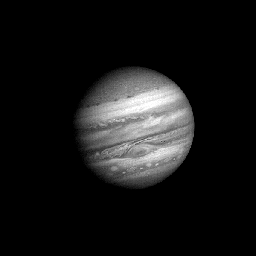 An animated view of Jupiter taken with photos taken every 10 hours.
An animated view of Jupiter taken with photos taken every 10 hours.
As Voyager was taking it’s photos of Jupiter it was also getting a gravity assist from the planet. Which is to say, it borrowed energy from the planet’s gravitation to change it’s trajectory and give it a boost to the next destination of its journey: Saturn. The Saturn encounter began November 1980 with closest approach on November 12, 1980 when it came within 77,000 miles (124,000 km). There have been a total of 4 spacecraft encounters with Saturn. Three of those were flybys and one, the Cassini-Huygens spacecraft, an extended mission which has been ongoing since 2004 and which will end in September 2017.
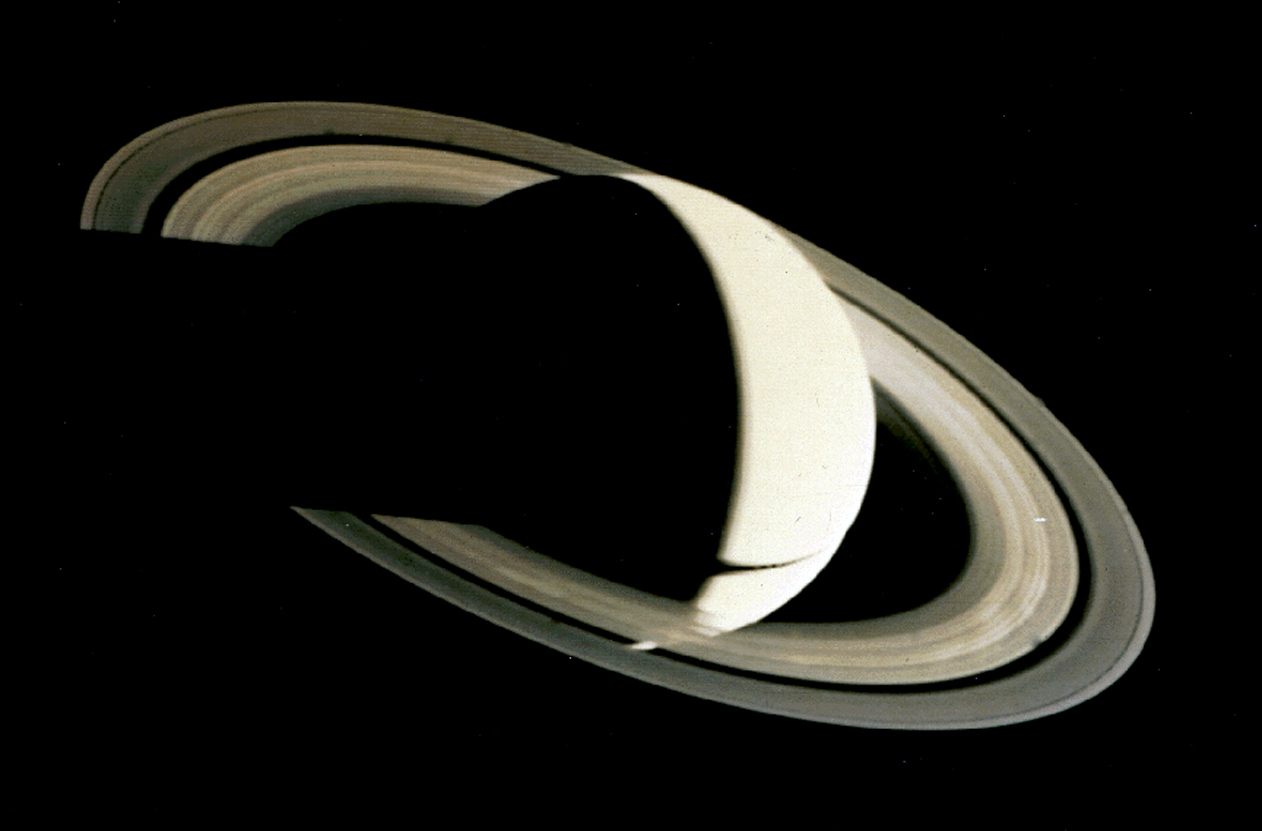
After Saturn, Voyager went on to Uranus and Neptune. Thanks to Carl Sagan, Voyager had one last photographic mission. The last photographs taken were a family portrait of our solar system. On February 14, 1990, at a distance of 6 billion kilometers from Earth, Voyager captured a mosaic of 60 photos including 6 planets: Jupiter, Earth, Venus, Saturn, Uranus and Neptune. It is from this series of images that the famous Pale Blue Dot photograph was taken. In the image the Earth is just a tiny blueish-white speck seen in a brownish band of light on the right side of the image.
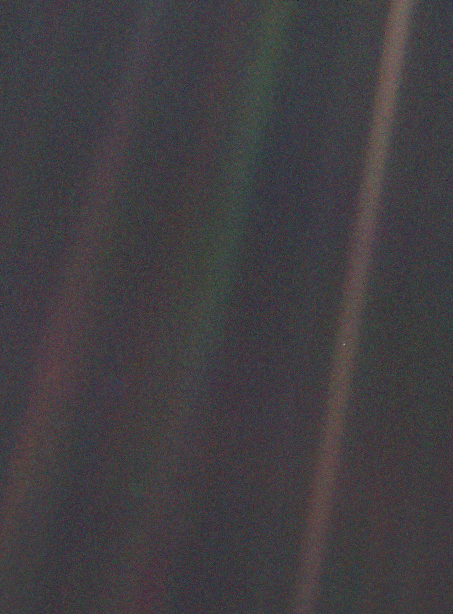
"We succeeded in taking that picture, and, if you look at it, you see a dot. That's here. That's home. That's us. On it, everyone you ever heard of, every human being who ever lived, lived out their lives. The aggregate of all our joys and sufferings, thousands of confident religions, ideologies and economic doctrines, every hunter and forager, every hero and coward, every creator and destroyer of civilizations, every king and peasant, every young couple in love, every hopeful child, every mother and father, every inventor and explorer, every teacher of morals, every corrupt politician, every superstar, every supreme leader, every saint and sinner in the history of our species, lived there – on a mote of dust, suspended in a sunbeam.The Earth is a very small stage in a vast cosmic arena. Think of the rivers of blood spilled by all those generals and emperors so that in glory and in triumph they could become the momentary masters of a fraction of a dot. Think of the endless cruelties visited by the inhabitants of one corner of the dot on scarcely distinguishable inhabitants of some other corner of the dot. How frequent their misunderstandings, how eager they are to kill one another, how fervent their hatreds. Our posturings, our imagined self-importance, the delusion that we have some privileged position in the universe, are challenged by this point of pale light.
[…] To my mind, there is perhaps no better demonstration of the folly of human conceits than this distant image of our tiny world. To me, it underscores our responsibility to deal more kindly and compassionately with one another and to preserve and cherish that pale blue dot, the only home we’ve ever known." — Carl Sagan, speech at Cornell University, October 13, 1994
To celebrate the 40 year anniversary PBS has created a fantastic website and documentary, The Farthest: Voyager in Space. It is a truly wonderful documentary and I was moved to tears more than once while watching it. Stream it via their app or the above website. I’ll likely be watching it again. The website is beautifully done with a wealth of imagery, text and live display of the current Voyager mission time and distance from Earth.
TED Talk - Worker Co-ops
"Another economic reality is possible -- one that values community, sustainability and resiliency instead of profit by any means necessary. Niki Okuk shares her case for cooperative economics and a vision for how working-class people can organize and own the businesses they work for, making decisions for themselves and enjoying the fruits of their labor."
A good bit of my life has been dedicated to the creation of co-ops. Mostly volunteer co-ops but still, co-ops. I fully believe that this is a better way to do things.
Swales and ducklings
In June of 2015 I was living a different life not too far from my current home1. During my time there I spent a month digging a series of seven swales for water harvesting which I wrote about here. I’d also made a little video for YouTube which gets a new comment every three or four months. I had one today and thought I’d rewatch the video. There’s something very satisfying about working in a landscape, creating a new, beneficial enhancement of the ecosystem with the intent of providing for other creatures. In this case our intent was to harvest water and to provide for our ducklings. The project turned out very well. The swales harvested thousands of gallons of water and the ducklings had a place to swim.
- After 5 years in my tiny cabin I had a 2 year relationship which took away for a bit ↩︎
Harvey is the new normal
David Grinspoon, writing for The Atlantic, Hurricane Harvey Lays Bare Our New Bargain With Nature
As I write this, the disaster of Hurricane Harvey is still unfolding. Buckets of rain are still falling in Houston and the waters are still rising. The flood damage, biblical in proportion, is frightening to behold. Even as the rescue efforts continue, many are wondering, “Is this the new normal for our coastal cities?”As Earth’s climate changes we can expect more destructive hurricanes. As sea level and surface temperatures rise, more solar energy is trapped in the atmosphere, revving up the hydrological cycle of evaporation and precipitation, and sometimes manifesting in terrifying storms. Add to this the rapid and sometimes careless development of our urban areas in patterns which are, shall we say, not always strictly motivated by long-term planning for runoff management and neighborhood safety.
We’ve set ourselves for a lot of pain. Climate change is only getting worse and we’re doing little to change things.
Podcasts
I listen to a lot of podcasts and thought I might start mentioning my favorites here.
I’ll begin with two recently listened to. The TED Radio Hour is a favorite and one of the latest episodes is a perfect example of why I enjoy it so much. Hardwired. I’ve given it a listen but will need to give it a second. I always know a podcast is great when many of the episodes require at least a second listen.
Another favorite, Science Friday, has, as usual, aired another excellent episode. In particular I enjoyed the segments on Voyager which included a wonderful interview with planetary scientist Carolyn Porco as well as the segment on indoor microbiomes. Fascinating stuff. Check it out.
Machine Learning's contribution to Siri's voice
The Siri team has a great post about the evolution of Siri’s speech synthesis on the Apple Machine Learning Journal:
Siri is a personal assistant that communicates using speech synthesis. Starting in iOS 10 and continuing with new features in iOS 11, we base Siri voices on deep learning. The resulting voices are more natural, smoother, and allow Siri’s personality to shine through. This article presents more details about the deep learning based technology behind Siri’s voice.Just scroll down to the bottom and listen to the progression between iOS 9, 10, and 11. It’s really impressive.
I’m surprised more beta users have not said more about this over the duration of the public betas. Until this post by Apple I’ve not seen it mentioned even once. Personally I will say that I consider it a fantastic improvement and thought it was one of the highlights of the WWDC Keynote. When I installed the public beta on my iPad the second first thing I did was invoke Siri so I could hear her new voice. So much better!
Back to the night sky
I started observing the night sky in late 2012 and kept up a pretty steady pace until about 12 months ago when my observing time shrank drastically. Partly due to weather, also due to a lack of effort on my part. I’m hoping to turn that around. I doubt I’ll be logging the 6 hour observing sessions I was doing in the first couple of years but I’d at least like to get in a couple hours when the skies are clear. Like many things in life, I find that when I make the effort my passion and interest deepen. When I fail to make the effort, they fade. My interest in observational astronomy is interwoven with my interest in cosmology, chemistry, physics and other related areas. These are not interests I am willing to give up due to laziness.
So, I logged a few sessions this past week. Right now our night sky faces in towards the Milky Way so lots of globular clusters and nebulae are visible. Oh, also, Saturn. Had a good, long look at Saturn. Then I spent a couple hours each night looking at globular clusters in Sagittarius, Pegasus (M15), and M2 in Aquarius.
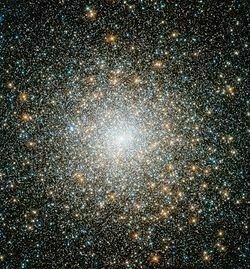
These stars are nearly as old as the Universe and, as I understand it, still remain a bit of a mystery in terms of how they came to be in clusters orbiting galaxies. Our galaxy has about 150 such clusters. They typically reside outside the disk of the galaxy and orbit the galactic core as satellites with an orbit radius of 130,000 light years. The Andromeda Galaxy is thought to have as many as 500 such globular clusters.
Speaking of our neighbor, I also had a nice long look at Andromeda. As always, a beautiful galaxy to look at through even a small scope.
iPad Journal: Looking for a new writing & blogging sweetspot
A couple weeks ago the developers of Ulysses took the app to a subscription model. I don’t do subscriptions. So, I said my goodbye. Then I began my move back to Byword for writing and publishing to WordPress. It works pretty well. There are a few quirks. For example, while it is possible to publish a post with an image the image must first be uploaded to the web and a link inserted for this to work. Compared to Ulysses which took care of uploading the image during publishing. Not as convenient but still not worth a subscription.
Another, when working on something of several pages, Byword lacks the ability to quickly jump to the beginning or end of the document with a keyboard shortcut. I often do podcast transcripts of many pages so this is important and a bit of a hassle when it’s lacking.And, on the note of trying to navigate through many pages with keys, I easily loose track of the cursor and have to tap the screen. Not the end of the world but just one of those little oddities. Byword still has not added the overlay for displaying keyboard shortcuts. As far as I know,there is no shortcut in Byword to easily add a link. Not the end of the world but just another little annoyance.
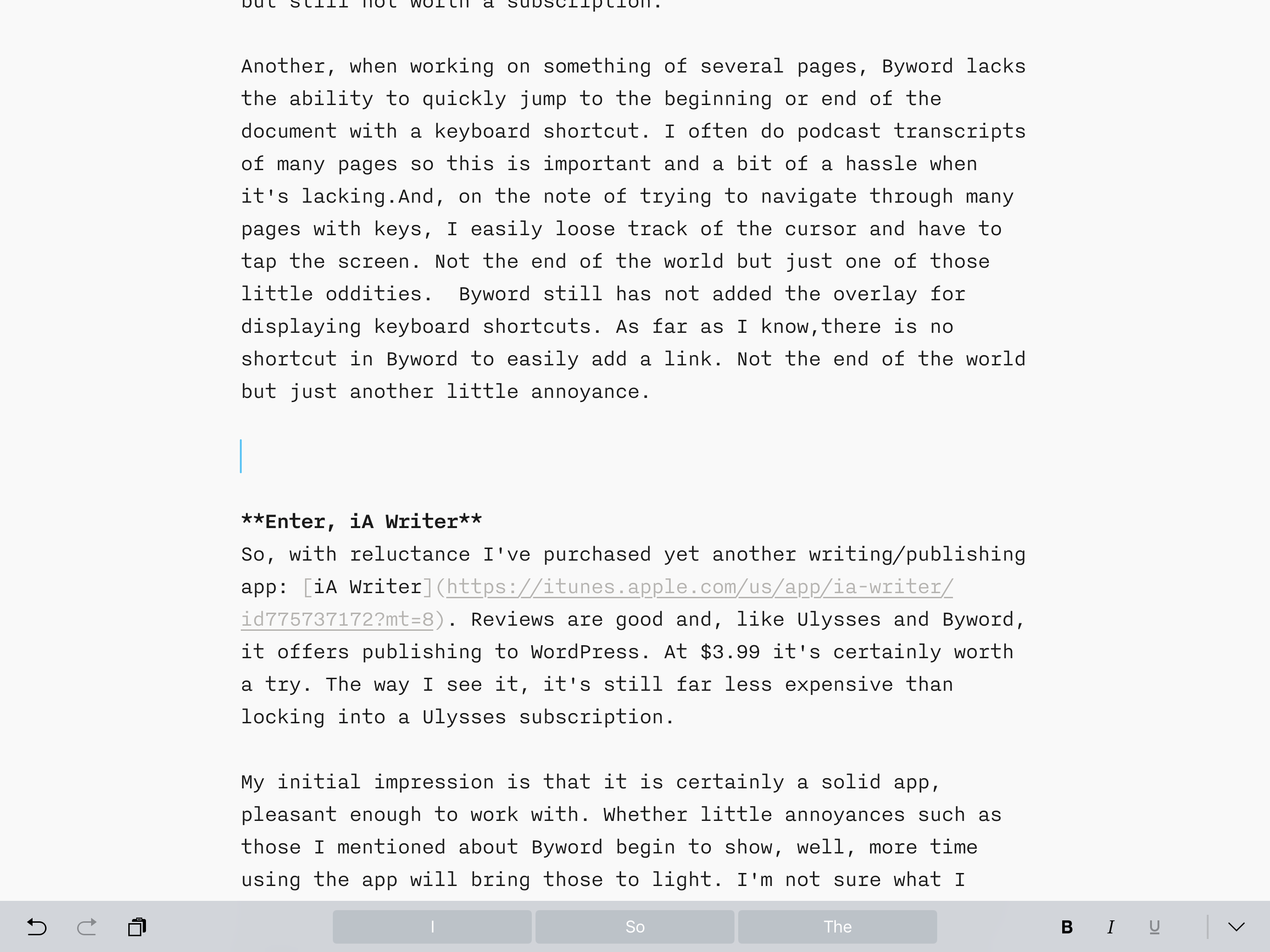
Enter, iA Writer So, with reluctance I’ve purchased yet another writing/publishing app: iA Writer. Reviews are good and, like Ulysses and Byword, it offers publishing to WordPress. At $3.99 it’s certainly worth a try. The way I see it, it’s still far less expensive than locking into a Ulysses subscription.
My initial impression is that it is certainly a solid app, pleasant enough to work with. Whether little annoyances such as those I mentioned about Byword begin to show, well, more time using the app will bring those to light. I’m not sure what I think about the font choice for writing but it’s not changeable. Something lacking that I was hoping for is an option to share text/urls from Safari. Currently, I can send such things to Drafts or Notes as a go between. Or, just as likely, I’ll use Clips. With iOS 11 around the corner it may be that I’ll be getting in the habit of dragging and dropping text and urls.
What I like:
- The blue cursor and highlight are nice and easier to see than the dark gold used by Byword.
- Set-up for publishing was very easy. It publishes as a draft and then opens up the page via web which is perfect. From there I can set the post type and add keywords and categories.
- I can select text then use the Command-k shortcut to turn the text into a link with the URL currently in the keyboard. It's a little thing but one I really like.
- I've tried uploading an image with this post and I get an error that the request timed out. So, that's a bummer.
Eclipse
Like many, I spent my Monday afternoon observing the moon cross between the Earth and the sun. My cabin is located in the path of the totality. I had 1:40 of totality and was lucky enough to share it with a handful of friends under clear skies.
To put it simply, it was absolutely glorious.
